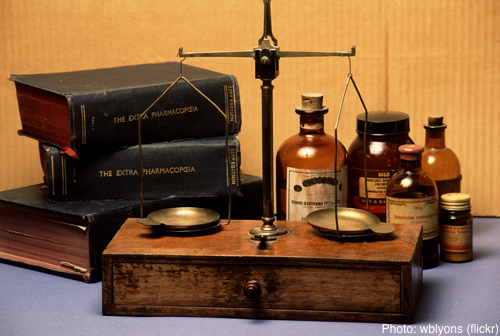A little while back I wrote a post on my early experiences with MyHealthRecord (MHR), discussed its strengths and weaknesses, and made some suggestions for improvement. At that point, it was still opt-in, but on July 16th a three month phase in period started whereby people can opt-out, before an MHR is created automatically for them. In the lead up to that date, and in the time since, MHR has been the subject of some robust discussion on both mainstream and social media. While the concept itself has been generally well received, there is significant controversy and debate over numerous aspects of the system, the legislation underlying it, as well as the government’s handling of the roll-out. Continue reading ““MHR-as-Imagined” vs “MHR-as-Done””
Tag: Patient Work
Progress Notes-Chronological
As discussed here, I was diagnosed with advanced melanoma in late 2013. It has been a wild ride since, and I thought it would be good to document the many steps in my journey. I’m hoping this will be a useful record not just for myself, but my family and friends, as well as those that might be facing a similar journey themselves. This document will evolve over time, both as I go back through the last few years and find things to add, but also as my story continues to unfold.
To see my medical history organised by system, see this post here.
EHRs: Safety vs Privacy & the ETTO Principle
A little while back I posted about the challenges a family member faced after forgetting to bring their medications when they came to visit us. In that post, I referred to the Electronic Transfer of Prescriptions (eTP) and I’ve now taken a closer look at this system and discovered some useful features, but also significant room for improvement and expansion.
Continue reading “EHRs: Safety vs Privacy & the ETTO Principle”
Travelling, Medications and Patient Work
Edit 18/5/2018: A follow-up to this post can be found here.
My parents, as they often do, came up to Newcastle and stayed for a few nights last week, and it ended up being a case study in Patient Work.
My mother left all her medications at home. I’m sure she’s not the first, and won’t be the last person to make this kind of skill-based error known as a “lapse”, but it immediately raised some obvious questions and issues that she, and others, had to go about solving, requiring significant amounts of time and mental effort which all contributed to her Patient Workload. Continue reading “Travelling, Medications and Patient Work”
The Complexity of Patient Work: An Addendum
There’s been yet another twist in my earlier story about trip to Sydney for a medical appointment a little while back. I popped into my pharmacist earlier this week to get a script filled and he casually asked me if wanted my final lot of Humira, which was the medication I was driving all over Sydney to try and get because I had run out. As it turned out, I had one more repeat than I had thought, and the pharmacist had filled it expecting me to come back and get it when I needed. This meant there was more Humira sitting in the pharmacy fridge in Newcastle waiting for me the whole time I was going going back and forth across Sydney!
Sigh…
The Complexity of Patient Work
Following my recent “discovery” of the concept of Patient Work, it has reframed the way I view all my interactions with the healthcare system such as doctors visits, taking medication, blood tests and scans and so on. I’ve decided I’m going to start describing and documenting some of these interactions primarily for my own interest, but also in case others find them interesting as well. What follows is an almost textbook example of some of the complexity and unpredictability of Patient Work, and the need for the Patient Work System to be resilient enough to cope with these variations and uncertainties
Patient Work in the Twitterverse
Following my recent post on Patient Work, I decided to do what i normally do when I want to research something and headed over to Twitter. I did a search using the hashtag #PatientWork and was surprised to discover that at that time (2/3/18) there was a total of only 25 tweets, the earliest one being from 2012. Furthermore, 5 of them were mine, and 7 were used in a sense that was unrelated to what I was interested in leaving only 13 of relevance to me that predated my interest in the topic! I think this confirms Holden’s opinion (quoted in my earlier post) that this area is under-represented in the HF/E area. I might have to see if I can do something about that!
Patient Work
One of the (many!) things I love about Human Factors/Ergonomics (HF/E) specialists is that a large chunk of their work involves studying, describing and naming “everyday” human experiences. So when I am listening to their presentations or reading their articles, it is not uncommon for me to have an “A-ha!” moment where they describe something that is very familiar to me. “Oh, that’s what that’s called!” or “Phew! I thought I was the only one that did that sort of thing!”. A relatively recent example of this for me was as at the Human Factors and Ergonomics Society of Australia conference (HFESA17) last year. This time, the everyday experience that now had a name was “Patient Work”. Continue reading “Patient Work”



